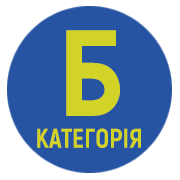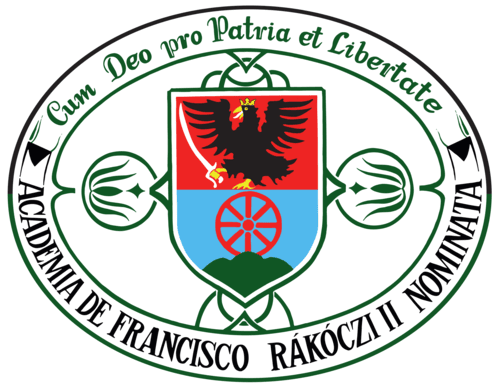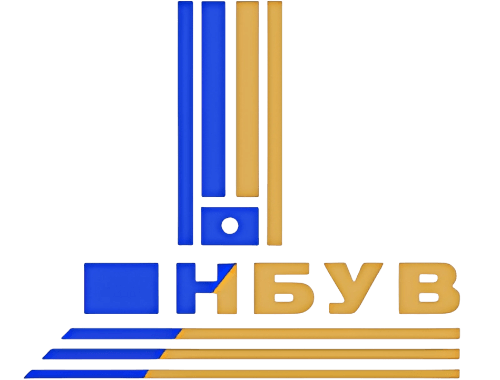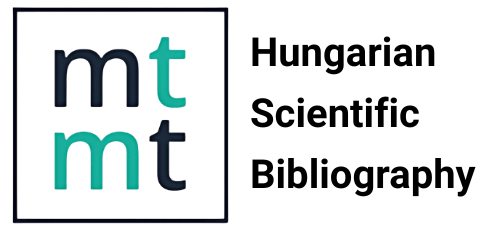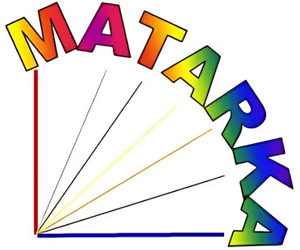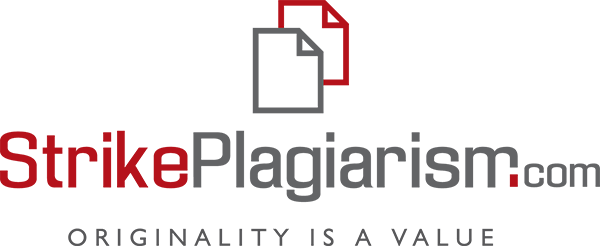The linguistic landscape of festival tourism in Transcarpathia
DOI:
https://doi.org/10.58423/2786-6726/2023-1-139-160Keywords:
Transcarpathia, linguistic landscape, tourism, festival, language useAbstract
In addition to natural, historical and cultural attractions, there are an increasing number of places in Transcarpathia where tourists can enjoy organised programmes. In the big cities and smaller towns, festivals and festival-like events take place from the second half of January until mid-December. The area inhabited by Hungarians also organises a significant number of festivals and festival-like events every year. Many of these are known throughout Ukraine and even more widely. Among the festivals in the region, folk art and folklore festivals are the most popular, while gastronomic festivals are in the second position. Gastronomic festivals (especially wine festivals) have become an increasingly important part of festival tourism in Transcarpathia, attracting a significant number of domestic visitors. In our study, we tried to investigate the linguistic landscape of gastronomic festivals, focusing on the two most famous Hungarian festivals (Mezőgecse international pig festival, Berehovo international wine festival) and the most popular festival in Mukachevo, the Mukachevo red wine festival. The research is mainly conducted through personal participant observation and photo-documentation, however, photos and information about the festivals published in the press, on the website of the organising municipality and other online community platforms were also analysed. In the linguistic landscape of the festivals in Transcarpathia, including international festivals, no other language is present apart from the state language or the mother tongue of the Hungarian minority living in the area. Even in the festivals of Hungarian settlements, bilingual signs and the slight dominance of Ukrainian in the symbolic linguistic space are typical. The proportion of languages also depends on the target audience and the needs of the festival, as well as on the area of the festival depending on the ethnicity of Transcarpathia.
References
Baranyi B. szerk. (2009) Kárpátalja. [Trancarpahia] Pécs – Budapest: MTA Regionális Kutatások Központja–Dialóg Campus Kiadó (In Hungarian)
Bátyi Szilvia2014. Hévíz: nyelvi tájkép orosz ecsettel. [Hévíz: linguistic landscape with a Russian brush] Alkalmazott Nyelvtudomány XIV (1-2): 21–34. (In Hungarian)
Bátyi Szilvia 2015. The place-making activity of Russian in Hungary. In Kristina Cergol Kovačević – Sanda Lucija Udier eds. Multidisciplinary Approaches to Multilingualism: Proceedigs from the CALS conference 2014. Frankfurt am Main, Peter Lang Verlag, 127–143.
Beregszászi Anikó 2005. „Csata” a szimbolikus térért, avagy a látható/láthatatlan anyanyelv. ["Battle" for symbolic space, or the visible/invisible mother tongue.] In: Beregszászi A. és Papp R. eds.: Kárpátalja. Társadalomtudományi tanulmányok. [Transcarpathia. Social science studies] Budapest–Beregszász, MTA Etnikai-nemzeti Kisebbségkutató Intézet–II. Rákóczi Ferenc Kárpátaljai Magyar Főiskola, 158–163. (In Hungarian)
Berghauer S. 2012. A turizmus mint kitörési pont Kárpátalján (?). [Tourism as a starting point in Transcarpathia (?)] Doktori értekezés. Pécs: Pécsi Tudományegyetem. kézirat (In Hungarian)
Cabal-Guarro, M. 2017. Is Russian decommodifying in Catalonia? Russian Journal of Linguistics 21 (3): 605–619.
Csernicskó István 2014. Мовна політика і мовний ландшафт сучасного Закарпаття в історичному плані (1900–1944 рр.). [Movna polityka i movnyi landshaft suchasnoho Zakarpattia v istorychnomu plani (1900–1944) In: Bárány E., Csernicskó I. eds.: Українсько-угорські міжмовні контакти: минуле і сучасність. Матеріали міжнародної наукової конференції. [Ukrainsko-uhorski mizhmovni kontakty: mynule i suchasnist. Materialy mizhnarodnoi naukovoi konferentsii.] Ungvár, Видавництво В. Падяка: 48–66. (In Ukrainian)
Csernicskó István 2018 A kárpátaljai magyar kisebbség nyelvmegtartásáról és gazdasági életképességéről a nyelvi tájkép tükrében. [On the language retention and economic viability of the Transcarpathian Hungarian minority in the light of the linguistic landscape] Metszetek Vol. 7., 2018/1: 119–141. (In Hungarian)
Csernicskó István 2019. Fények és árnyak Kárpátalja nyelvi tájképéből. [Lights and shadows from the linguistic landscape of Transcarpathia] Ungvár, Authdor-Shark (In Hungarian)
Dégi Zsuzsanna 2012. The Linguistic Landscape of Miercurea Ciuc (Csíkszereda). Acta Universitatis Sapientiae: Philologica 4(2): 341–356.
Heller, M., Pujolar, J. & Duchêne, A. 2014. Linguistic commodification in tourism. Journal of Sociolinguistics 18(4): 539–566.
Heltai B. É. 2014. Többnyelvűség, turizmus, új migráció és gazdaság: Átalakuló interetnikus kapcsolatok és a többnyelvűség új formái egy németek, finnek, magyarok és cigányok lakta településen. [Multilingualism, tourism, new migration and economy: Transforming interethnic relations and new forms of multilingualism in a settlement inhabited by Germans, Finns, Hungarians and Gypsies] In: Így kutattunk mi! Tanulmánykötet II. [This is how we researched! Study volume II.] Budapest, Közigazgatási és Igazságügyi Hivatal, 9–20. (In Hungarian)
Hires-László Kornélia 2015. Nyelvi tájkép és etnicitás Beregszászon. [Linguistic landscape and ethnicity in Beregszasz ] In. Márku A. – Hires-László K. eds. Nyelvoktatás, kétnyelvűség, nyelvi tájkép. [Language teaching, bilingualism, linguistic landscape.] Ungvár: Autdor-Shark: 160–185. (In Hungarian)
Holecz M. – Bartha Cs. – Varjasi Sz. 2016. Új paradigma vagy térfoglalás? Nyelvhasználók a periférián és a többnyelvűség kritikai (nyelvi) tájképe. [New paradigm or space occupation? Language users on the periphery and the critical (linguistic) landscape of multilingualism] Általános Nyelvészeti Tanulmányok XXVIII. 73–89. (In Hungarian)
Kallen, J. 2009. Tourism and representation in the Irish linguistic landscape. In: E. Shohamy & D. Gorter eds. Linguistic landscape: Expanding the scenery. London, Routledge, 270–283.
Karmacsi Zoltán 2014a. Település- és utcanevek Kárpátalja magyarlakta településein. [Settlement and street names in the Magyar-inhabited settlements of Transcarpathia]. In: Beregszászi A., Hires-László K. eds.: Meszelt falakon túl: Születésnapi köszöntő kötet Kótyuk István tiszteletére. [Beyond whitewashed walls: Birthday greeting volume in honor of István Kótyuk.] Beregszász, II. Rákóczi Ferenc Kárpátaljai Magyar Főiskola, 87–98. (In Hungarian)
Karmacsi Zoltán 2014b. Vizuális kétnyelvűség: az új nyelvtörvény adta lehetőségek. [Visual bilingualism: opportunities provided by the new language law ] In: Bárány E., Csernicskó I. eds.: Українсько-угорські міжмовні контакти: минуле і сучасність. Матеріали міжнародної наукової конференції. [Ukrainsko-uhorski mizhmovni kontakty: mynule i suchasnist. Materialy mizhnarodnoi naukovoi konferentsii.] Ungvár, Видавництво В. Падяка, 120–131. (In Hungarian)
Karmacsi Zoltán 2017. A nyelvi tájkép változásának egy aspektusa. [An aspect of the change in the linguistic landscape] In Márku Anita és Tóth Enikő eds. Többnyelvűség, regionalitás, nyelvoktatás. Tanulmányok a Hodinka Antal Nyelvészeti Kutatóközpont kutatásaiból III. [Multilingualism, regionalism, language education. Studies from the researches of the Antal Hodinka Linguistic Research Center III.], RIK-U, Ungvár. 54–61. (In Hungarian)
Karmacsi Zoltán 2018a Kárpátalja turisztikai vonzerőinek nyelvi tájképe. [Linguistic landscape of Transcarpathian tourist attractions] Metszetek Vol. 7., 2018/1: 91–118. (In Hungarian)
Karmacsi Zoltán 2018b. Egy kárpátaljai gasztrofesztivál nyelvi tájképe. [Linguistic landscape of a Transcarpathian gastro festival] In: Nagy-Kolozsvári Enikő–Kovács Szilvia (eds.): Multikulturalizmus és diverzitás a 21. században. [Multiculturalism and diversity in the 21st century.] Absztraktkötet. Ungvár, RIK-U Kft., 136–139. (In Hungarian)
Laihonen, P. – Csernicskó, I. 2017 Language ideologies in south-western Ukraine: linguascaping a Transcarpathian spa.
Laitinen, M. – Zabrodskaja, A. 2015. Dimensions and dynamics of sociolinguistic landscapes in Europe. In: M. Laitinen – A. Zabrodskaja eds.: Dimensions of Sociolinguistics Landscapes in Europe. Materials and Methodological Solutions.Frankfurt am Main, Peter Lang, 11–25.
Pachné Heltai B. 2017. Nyelvcsere és szezonális migráció egy többnyelvű magyarországi közösségben. Nyelvi gyakorlatok, ideológiák és kommodifikáció társadalmi folyamatok nexusában. Budapest, ELTE. PhD-értekezés. (In Hungarian)
Pavlenko, Aneta 2008. Multilingualism in Post-Soviet Countries: Language Revival, Language Removal, and Sociolinguistic Theory. The International Journal of Bilingual Education and Bilingualism 11 (3–4): 275–314.
Rada 2015. Zakarpattya Region. Ukraine Today: Catalog of leading enterprises of Ukraine. [www.rada.com.ua/eng/RegionsPotential/Zakarpattya]
Sass Enikő 2008. Kárpátalja Ukrajna turizmusában betöltött pozíciójának vizsgálata. [Examination of Ukraine's position in tourism] In: Szónoky Ancsin G. ed. Magyarok a Kárpát-medencében: Tudományos nemzetközi konferencia CD-ROM, [Hungarians in the Carpathian Basin: International Scientific Conference CD-ROM] Szeged: (kiadó nélkül) 465–476. (In Hungarian)
Sass Enikő 2012. A kárpátaljai falusi turizmus múltja, jelene és jövőképe. [The past, present and future vision of Transcarpathian village tourism ] In: Aubert A. – Gyuricza L. – Huszti Zs. eds. A kultúra turizmusa a turizmus kultúrája. [The tourism of culture is the culture of tourism] Pécs: IDResearch Kft. – Publikon, 529–549. (In Hungarian)
Sass Enikő 2016. Kárpátalja fesztiváljainak elemzése internetes megjelenésük alapján. [Analysis of festivals in Subcarpathia based on their appearance on the Internet] In: Jászberényi M. – Zátori A. – Ásványi K. eds. Fesztiválturizmus. [Festival tourism] Budapest: Akadémiai Kiadó, 368–382. (In Hungarian)
Thurlow, C. & Jaworski, A. 2010. Tourism Discourse: Language and Global Mobility. Basingstoke, UK: Palgrave Macmillan.
Tóth Enikő 2014a. A magyar nyelv megjelenése Badaló és Halábor nyelvi tájképében. [The appearance of the Hungarian language in the linguistic landscape of Badaló and Halábor] Limes – 2014. A II. Rákóczi Ferenc Kárpátaljai Magyar Főiskola tudományos évkönyve, I. évfolyam. Ungvár, V. Pagyak Kiadója, 57–64. (In Hungarian)
Tóth Enikő 2014b. Mezőgecse község nyelvi tájképe: szociolingvisztikai elemzés. [Linguistic landscape of Mezőgecse village: sociolinguistic analysis] In: Студії з філології та журналістики. Випуск 2. [Studii z filolohii ta zhurnalistyky. Vypusk 2.] Ужгород, Видавництво ФОП Бреза, 410–412. (In Hungarian)
Downloads
Published
Issue
Section
License
© 2025 Author(s). This is an open-access article distributed under the terms of the Creative Commons Attribution 4.0 International License (CC BY 4.0).
Authors retain copyright and grant the journal the right of first publication. The work is simultaneously licensed under a Creative Commons Attribution 4.0 International License (CC BY 4.0), which permits others to share the work with appropriate credit given to the author(s) and the initial publication in this journal.


